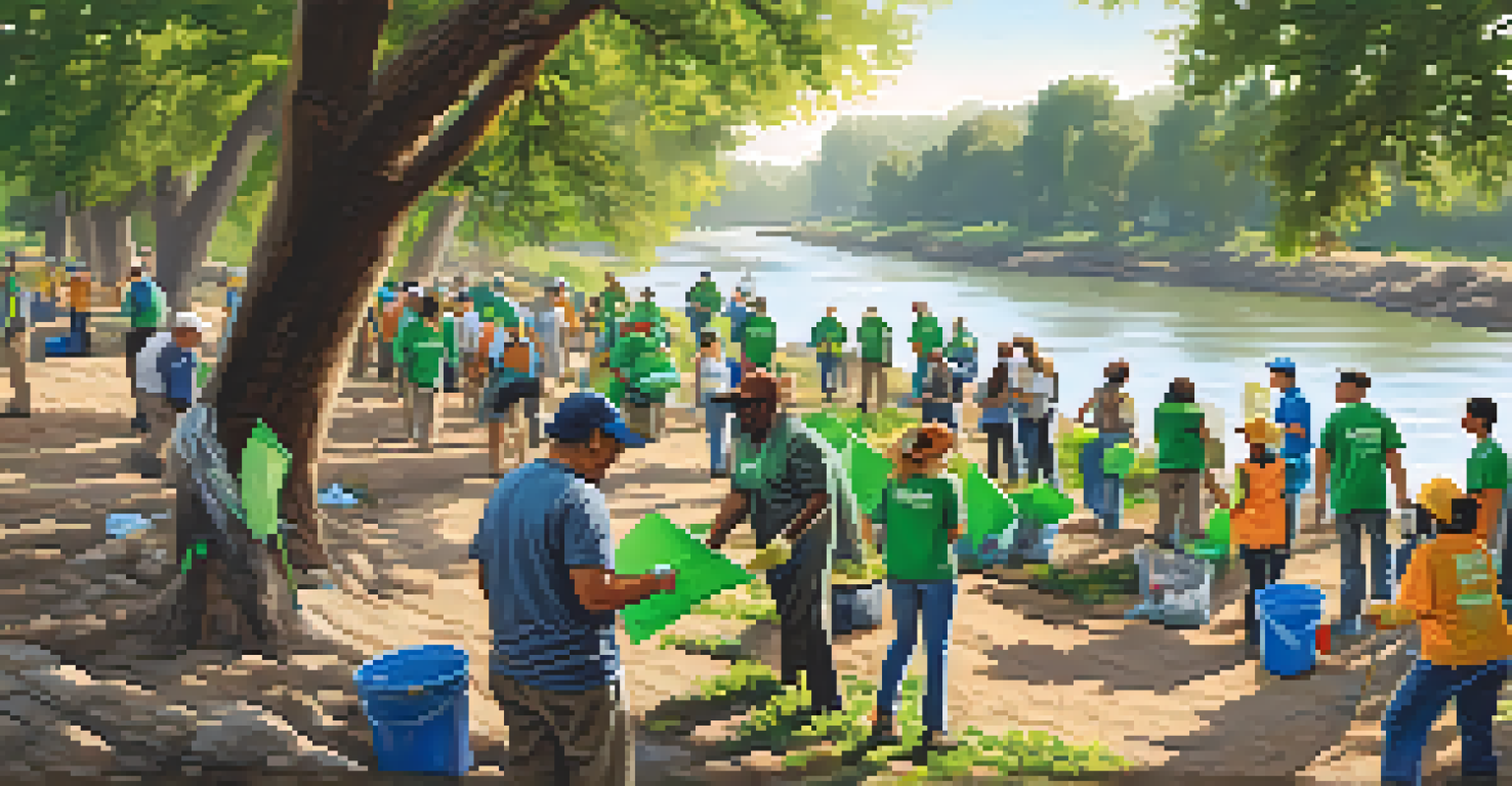Habitats at Risk: Protecting Sacramento's Local Ecosystems

Understanding Sacramento's Unique Ecosystems
Sacramento is home to diverse ecosystems, including wetlands, grasslands, and riparian zones. Each of these habitats plays a crucial role in supporting wildlife and maintaining ecological balance. For instance, the Sacramento-San Joaquin Delta is vital for migratory birds and fish species, serving as both a breeding ground and a sanctuary.
In every walk with nature one receives far more than he seeks.
These ecosystems are not just beautiful; they also provide essential services like flood control, water filtration, and carbon sequestration. However, many people are unaware of the intricate connections between these habitats and their everyday lives. Understanding this relationship is the first step toward fostering a sense of responsibility for their protection.
Moreover, the rich biodiversity found in Sacramento enhances the area's natural beauty and contributes to its cultural identity. By recognizing the significance of these ecosystems, we can better appreciate the urgent need to safeguard them for future generations.
Identifying Threats to Local Habitats
Sacramento's ecosystems face numerous threats, including urban development, pollution, and climate change. Urban sprawl often leads to habitat destruction, pushing wildlife into smaller, fragmented areas. This disruption can result in a decline in species populations and a loss of biodiversity.

Pollution from agricultural runoff and industrial activities further deteriorates the health of these habitats. Chemicals and waste can contaminate water sources, affecting not only wildlife but also the communities that rely on these ecosystems for drinking water and recreation. Such impacts can create a ripple effect, leading to long-term ecological consequences.
Protecting Unique Ecosystems
Sacramento's diverse ecosystems are crucial for wildlife, flood control, and water quality, making their protection essential.
Climate change adds another layer of complexity, altering weather patterns and habitats. Rising temperatures and changing precipitation can shift the distribution of plant and animal species, making it increasingly difficult for them to adapt. Understanding these threats is essential for developing effective conservation strategies.
The Role of Conservation Organizations
Conservation organizations play a vital role in protecting Sacramento’s ecosystems. They work to raise awareness about the importance of local habitats and advocate for policies that promote sustainability. Many organizations engage in hands-on restoration projects, restoring wetlands and planting native vegetation to support wildlife.
The greatest threat to our planet is the belief that someone else will save it.
By collaborating with local communities, these organizations create educational programs that empower residents to take action. Whether it’s organizing clean-up events or promoting native gardening, these initiatives foster a sense of stewardship among community members. This grassroots involvement is crucial for long-term ecological health.
Furthermore, conservation groups often partner with government agencies to secure funding and resources for habitat protection. Their efforts not only benefit wildlife but also enhance the quality of life for Sacramento residents, making the city a more vibrant and sustainable place to live.
Sustainable Practices for Local Residents
Every resident of Sacramento can contribute to the protection of local habitats through simple, sustainable practices. For example, reducing water usage and avoiding harmful chemicals in gardening can significantly lessen the impact on nearby ecosystems. Opting for organic gardening methods can prevent water pollution and support local biodiversity.
Incorporating native plants into home landscapes is another effective way to promote habitat health. These plants are better suited to the local climate and provide essential food and shelter for native wildlife. Plus, they require less maintenance and water, making them an environmentally friendly choice.
Community Engagement Matters
Active community involvement in conservation efforts enhances local habitats and fosters a shared sense of stewardship.
Additionally, residents can participate in local conservation initiatives or volunteer for habitat restoration projects. Engaging with community efforts not only helps local ecosystems but also fosters a sense of connection to the natural world, enriching the lives of those who participate.
Engaging Youth in Environmental Education
Educating the younger generation about the importance of local ecosystems is crucial for future conservation efforts. Schools and community organizations can implement programs that teach students about Sacramento's unique habitats and their role in the environment. Hands-on activities, such as field trips to local parks, can spark a lifelong interest in nature.
By fostering an appreciation for the environment, we empower youth to become advocates for its protection. Programs that involve students in habitat restoration or wildlife monitoring can instill a sense of responsibility and connection to their local ecosystems. This engagement can lead to innovative solutions for the challenges these habitats face.
Moreover, incorporating environmental education into school curricula can help students develop critical thinking skills as they explore complex issues like climate change and biodiversity loss. By equipping the next generation with knowledge and skills, we can ensure that they are prepared to tackle these challenges head-on.
Policy Changes for Habitat Protection
Effective habitat protection requires strong policies at the local, state, and national levels. Advocating for land use regulations that prioritize the preservation of natural areas is essential to combat the pressures of urban development. Policies that promote sustainable agriculture and responsible water management can also mitigate some of the threats posed by pollution.
Local governments can implement zoning measures that protect critical habitats from encroachment while promoting green spaces within urban areas. Increasing the availability of parks and natural reserves can provide much-needed refuge for wildlife and enhance residents' quality of life. These measures can create a balance between development and conservation.
Education Drives Future Conservation
Engaging youth through environmental education equips the next generation with the knowledge to advocate for local ecosystems.
Collaboration between policymakers, conservation organizations, and community members is crucial for effective habitat protection. By working together, we can create a more sustainable future that values the benefits provided by Sacramento's ecosystems while accommodating growth and development.
Community Involvement: A Path to Recovery
Community involvement is key to the recovery and protection of Sacramento's local ecosystems. When residents come together for a common cause, they can achieve remarkable results. Initiatives like neighborhood clean-up days or habitat restoration projects not only improve local environments but also strengthen community bonds.
Social media has become a powerful tool for spreading awareness about local ecological issues and mobilizing support. Community members can share information about upcoming events or volunteer opportunities, encouraging others to participate. This collective action amplifies the impact of individual efforts.

Ultimately, when people feel a sense of connection to their local ecosystems, they are more likely to advocate for their protection. By fostering a culture of environmental stewardship, Sacramento residents can ensure that these precious habitats thrive for generations to come.